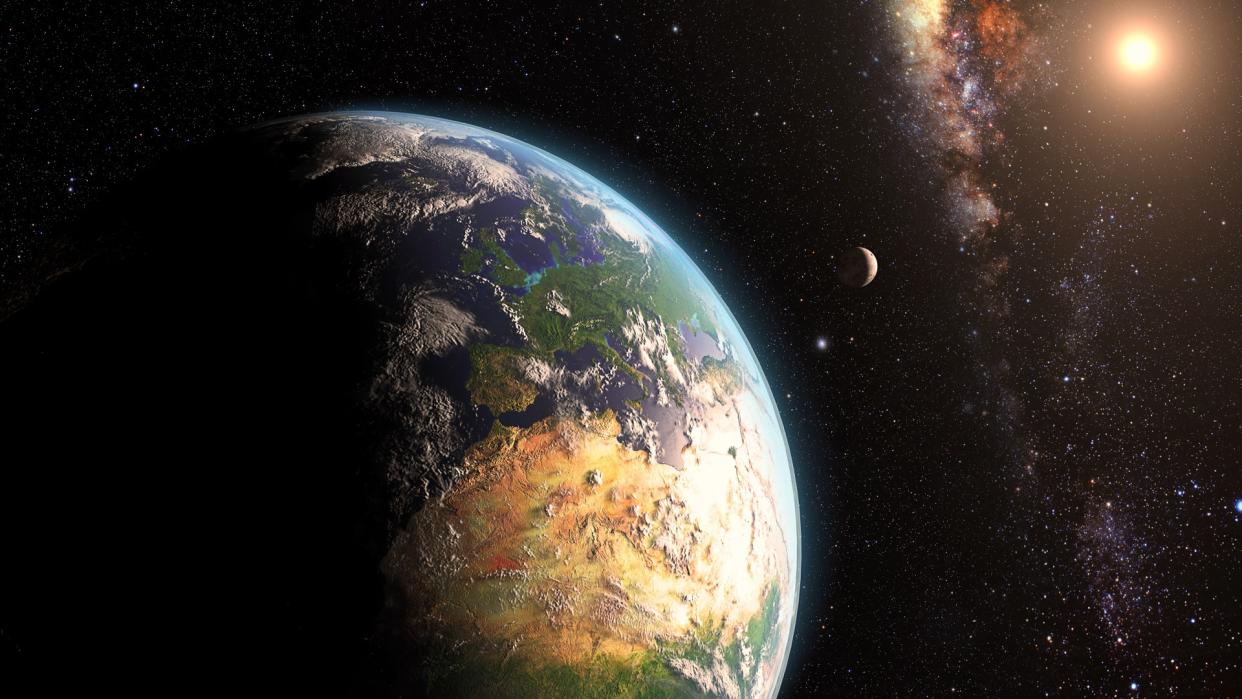Happy Aphelion Day! Earth is at its farthest from the sun for 2023 today

Temperatures reached record highs this week.
In the days following Independence Day, thermometers climbed to abnormal highs in many parts of the world. With such hot temperatures as these, it might be a surprise for you to hear that on Thursday (July 6) at 4:06 p.m. Eastern Daylight Time (2006 GMT), our Earth will reach the point in its orbit where it is farthest from the sun in space.
Called aphelion, the sun at that moment will be 94,506,364 miles (152,093,250 km) from our Earth (measured from center to center), or 3,103,330 miles (4,994,325 km) farther as compared to when the Earth was closest to it (called perihelion) on Jan. 4. The difference in distance is equivalent to 3.29%, which makes a difference in radiant heat received by Earth of nearly 7 percent; a change of only one part in 30.
Related: How far is Earth from the sun?
Indeed, it's probably no surprise that if you ask most people in which month of the year, they believe that the Earth is closest to the sun most probably would say we're closest during June, July or August. But our warm weather doesn't relate to our distance from the sun. It's because of the 23.5-degree tilt of the Earth's axis that the sun is above the horizon for different lengths of time at different seasons. The tilt determines whether the sun's rays strike us at a low angle or more directly.
At New York's latitude, the more nearly direct rays at the summer solstice of June 21 bring about three times as much heat as the more slanting rays at the winter solstice on December 21. Heat received by any region is dependent on the length of daylight and the angle of the sun above the horizon, hence the noticeable differences in temperatures that are registered over different parts of the world.
A climatological fallacy
When I attended Henry Bruckner Junior High School #101 in The Bronx, my Earth Science teacher, Mr. Saul Shenberg, told all of us that because we were farthest from the sun in the July and closest in December, that such a difference would tend to warm the winters and cool the summers ... at least in the Northern Hemisphere.
That certainly seemed to make sense, and yet the truth of the matter is that the preponderance of large land masses in the Northern Hemisphere works the other way and actually tends to make our northern winters colder and the summers hotter!
RELATED STORIES:
— Perihelion: What is it and when does it occur?
— What causes the strange green flash at sunset and sunrise on Earth?
Interestingly, the times when the Earth lies at its closest and farthest points from the sun roughly coincide with two significant holidays here in the United States: We're closest to the sun around New Year's Day and farthest from the sun around Independence Day.
For those living in Canada, aphelion nearly coincides with their national holiday — Canada Day — on July 1.
But actually, depending on the year, the date of perihelion can vary from Jan. 1 to 5 and the date of aphelion can vary from July 2 to July 6.
Joe Rao serves as an instructor and guest lecturer at New York's Hayden Planetarium. He writes about astronomy for Natural History magazine, the Farmers' Almanac and other publications.

